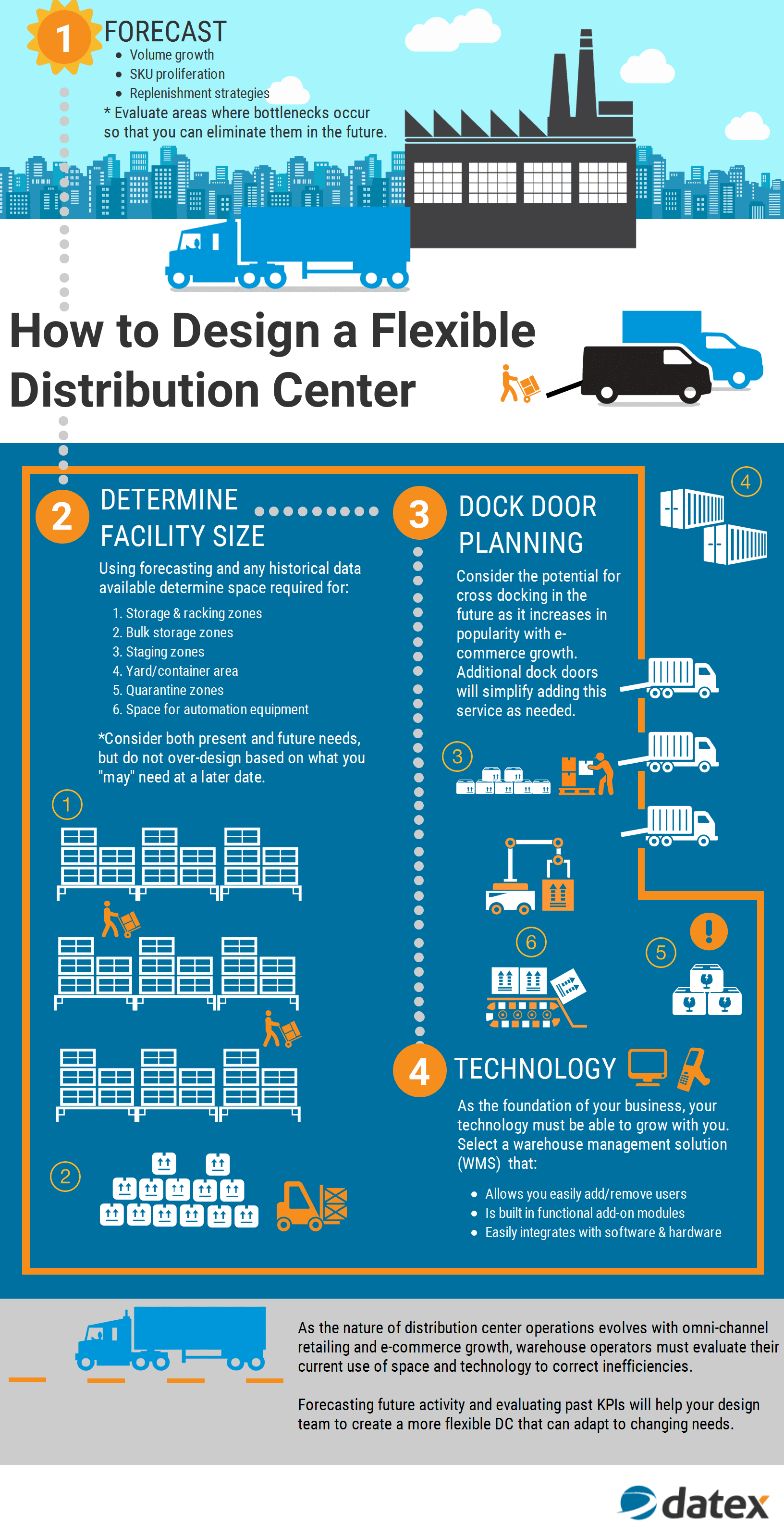4 Steps to Creating a Flexible Distribution Center
- Forecasting
- Facility Sizing
- Dock Door Planning
- Build a Foundation
Forecasting
The first step in designing a flexible distribution center is forecasting. Analyze historical data and make adjustments for expected growth in areas relating to: volume growth, SKU proliferation and replenishment strategies. While overestimating needs in these areas can lead to dead space in your distribution center, underestimating can cause bottlenecks which can cause significant efficiency deficits.
Facility Sizing
The second step in designing your flexible DC is to determine the size of your facility. This is where your forecasting data will come into play. In order to finalize facility size you must consider the space requirements for your individual business components such as storage and racking zones, bulk storage areas, staging zones, yard/container area, quarantine zones and space needed for automation equipment if applicable.
Dock Door Planning
Thirdly your team must come to agreement on how many dock doors is sufficient. Adding extra dock doors provides your distribution center to add more services later. Services such as cross docking require additional dock space and have the potential to add revenue for your DC operation.
Build a Foundation
In the last and final step, your team must build the foundation. The foundation of any great supply chain operation is their technology. The use of a warehouse management solution will help you to easily increase or decrease staff size as needed, add on functionality as your business grows and provide a seamless user experience with mobile devices and secondary software systems. Selecting a flexible WMS that can grow with your distribution center is just as critical as designing a flexible distribution center.
To learn more about warehouse management systems or designing a flexible distribution center contact Datex supply chain experts today at marketing@datexcorp.com or 800.933.2839 ext 243.

